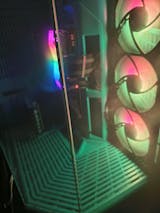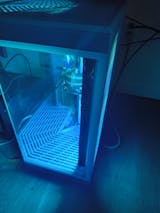Every PC enthusiast knows that high-pitched sound that emanates from the depths of your computer when you boot it up. It sounds almost as if your ears are ringing, but you’re not alone. That shrill sound is known as coil whine, which is a phenomenon that can occur in an array of PC components, but it typically occurs when you start up an especially taxing program. Understanding coil whine is the first step to preventing it. In this article, we explore what coil whine is, as well as ways you can prevent it from happening in your PC and quick fixes to use if it does happen.
What is Coil Whine?
Coil whine, also known as electromagnetically excited acoustic noise and vibration or audible magnetic noise, is one of the most frustrating phenomena in modern technology. As its name suggests, this high-pitched noise is caused by electromagnetic coils that act as inductors or transformers. Though it can come from many components, coil whine is usually found in video cards. High-end graphics cards are used to run intensive software or demanding games, which can cause them to work very hard and vibrate. Every PC component has a resonant frequency when coupled with the rest of the electrical circuit. Noise can also occur when the coil is poorly secured to the circuit board. Unfortunately, there is little you can do to reverse or remove coil whine once you have it. However, there are precautions you can take.
Dampening Coil Whine
When you work or play with headphones or speakers, coil whine can become pretty annoying. Luckily, you can trap all that noise inside the case of your computer. PC enclosures each have their own audio properties, and some are designed to dampen sound or vibration better than others. PC enthusiasts whose cases feature high-density foam, fabric, or other dampening materials will find it easier to trap the noise than those whose cases are made from bare steel or aluminum. Some cases come with optional plates or blockers for fan mounts. One thing you can do is double check all screws so ensure they are tight. You can also move all your PC components to a new case if you know how to swap out a graphics card or RAM.
Replacing Components
Pinpointing the part that’s causing the coil whine is key. Though it’s most common in graphics cards, the power supply, motherboards, and processors are all capable of producing noise. Noise might not be enough for a manufacturer to accept a replacement under warranty, but you can replace the part. Spending hundreds of dollars on new parts may not seem conducive to your everyday computing needs, but the only other option is to use sound-blocking speakers or headphones. Read as many product reviews as you can before buying your next graphics card or part. Research the product name and model number to see whether there are any complaints from current users.













